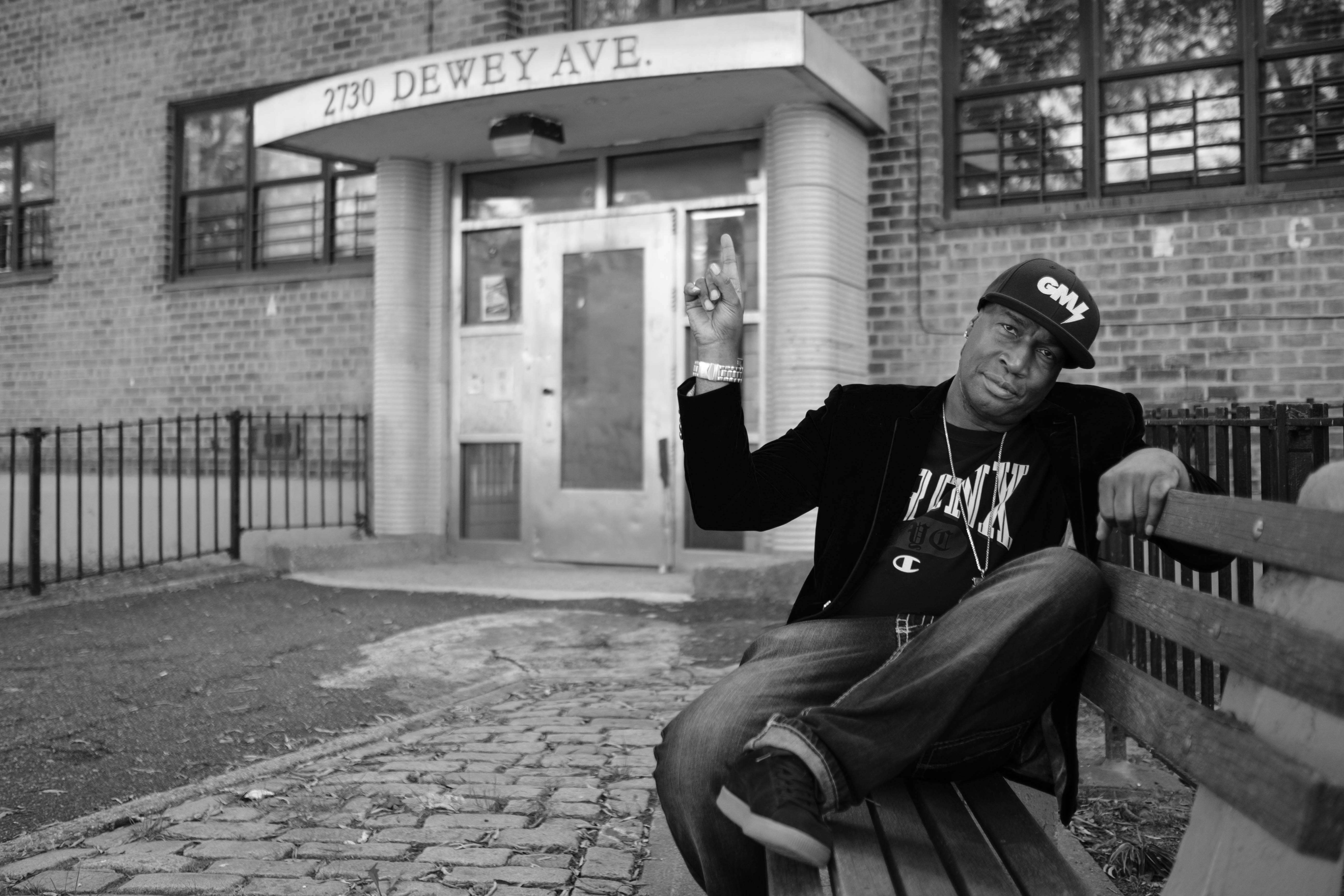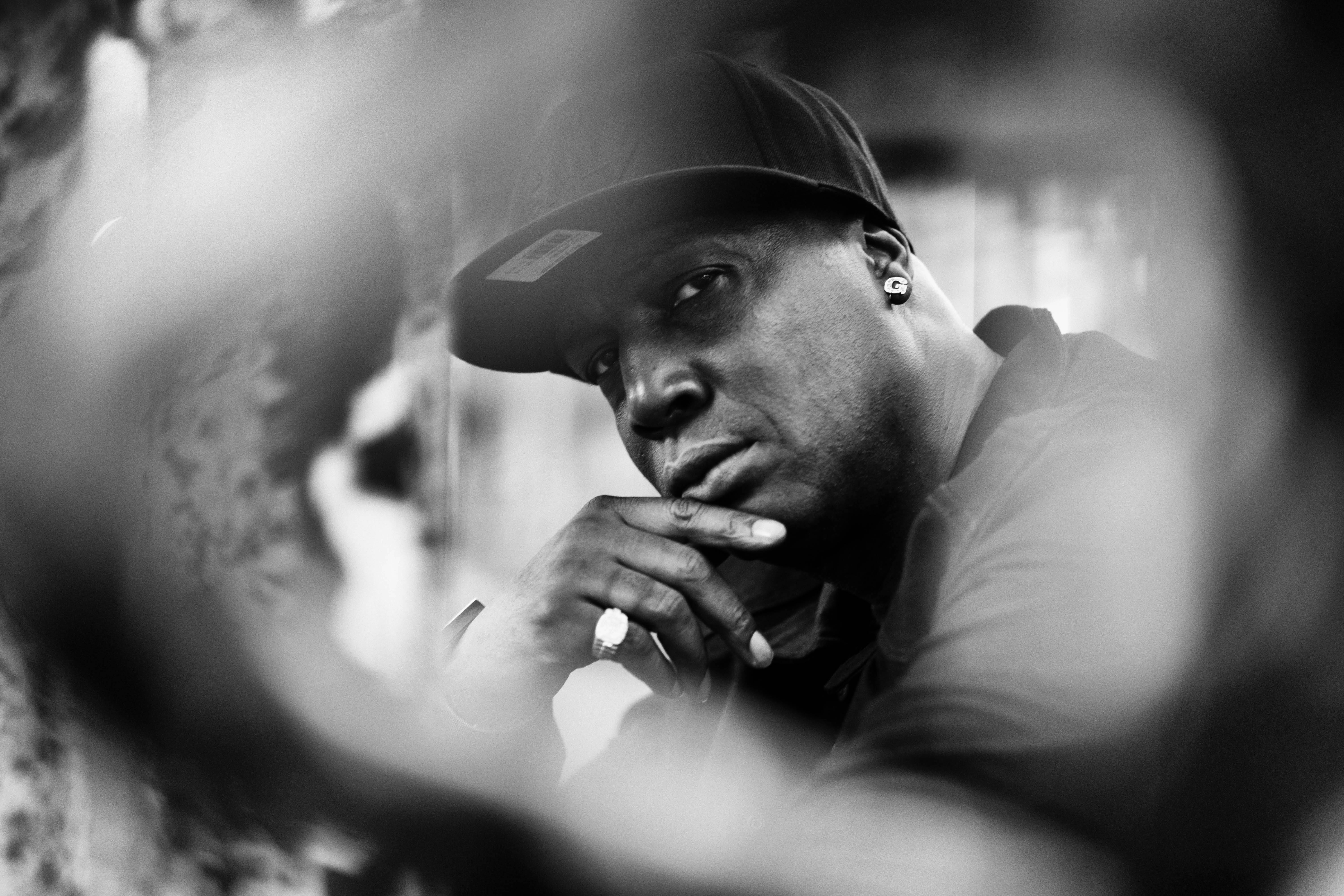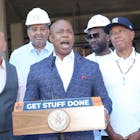
The Definitive Grandmaster Flash Interview
The Definitive Grandmaster Flash Interview
By Alec Banks
Published Sat, December 31, 2022 at 2:37 PM EST
In honor of a year-long celebration of Hip-Hop’s 50th birthday in 2023, Grandmaster Flash visited Rock The Bells Radio to present his story in his own words.
Featuring 12-hours of content, hear stories from Grandmaster Flash, and exclusive mixes from DJ Jazzy Jeff, Mannie Fresh, Young Guru, DJ Spinderella, Mix Master Mike, DJ Battlecat, Terminator X, Jazzy Jay, Pete Rock, Clark Kent, Grandmaster Flash and many more.
Below, we’ve complied highlights from Flash’s takeover. Tune in to Rock The Bells Radio Channel 43 on SiriusXM at 12 EST tomorrow to hear the entire celebration in its entirety.
On his teenage years
I wasn't going outside to play. I wouldn't necessarily say I wasn't having fun. It was just more felt like God was calling me and I had to finish this way of playing music. So it went from identifying the cartridge, which is ceramic or magnetic, and the needle, conical versus elliptical, and then the torque of a turntable from the state of inertia up to speed, and the area of the break, and how do I transition from one to the other while the crowd was dancing.
So for me, it was all about not sound, but math. And my whole thing was based on math. So if the crowd was dancing, one minute, they may be jamming to a German drummer, and then I'll transition to a Japanese drummer and then a drummer from California and a drummer from the Bronx or a drummer from Italy. So for me, it was, you're supposed to go to school and summer's supposed to be your fun time. Me, it was just doing computations and theories and figuring out how everything worked pretty much. So it was head science. But it was fun though.
On his Father's inspiration
He's the reason why I fell in love with vinyl because of the reprimanding, and I'll just say that, that I used to get going into that closet. The rules in the Saddler house was don't go in the living room. Do not go in the living room where the brown box lived, and do not go in that closet where dad's records lived. I used to watch dad come home. He would come home from work, mom would make him dinner. Then he would go get his spirits, and then he would go into this particular closet. And in his closet, he would pull out these square objects.
And on these square objects would be pictures of a train, or a flower, or a person, or the sun, or just words. And I just was wondering, what was he going to do with that? And he would pull this black disc out of the square paper. And he would go into the living room, where the brown box was. And he would put this black disc inside the brown box, hit one button, and this thing would go up. The record would go down, arm would go across, down. And music used to come out of the box. And at that point in time, being the toddler that I was, I thought dad was a magician. How did he pull that off?
And him doing that over and over and over again, I decided when he wasn't looking that I would attempt to do this. In my attempt, I put the records back in the wrong place because dad was very meticulous with where the records were placed. So I would get reprimanded and reprimanded and reprimanded. But by this time, he just couldn't stop me anymore. So as I got older, it's my connection with vinyl became very, very important. I studied how it looked. How I can detect a drum roll or a drum section, I can just be able to actually detect. So my dad was my first inspiration. So between my dad and my mom, they're the reason why I'm here doing what I do.
On his first turntable
I can remember [being] in the search for the proper turntable from Magnum Vox, official prize Pioneers, Zenith, and the like. I can remember walking up Southern Boulevard in Hunts Point area out the Bronx, and in the window was this battleship gray turntable. It probably was the most ugliest turntable that I've ever seen, but it kind of caught my eye.
I went into this particular store and this particular store, I asked the salesman, I'm doing a turntable study and if it's possible, can you take this turntable out the window so that I can test it? Pretty much what I wanted to do was power it up, put my fingertips on it, and see how much torque it had from the state of inertia.
I can remember the salesmen looking at me and saying, you want to do what? Then he went in the back and got somebody who was twice the size of him and they asked me to ask the question again. I asked him, I'm doing this turntable study and if it's possible, can you just please plug it in? I'm just doing a turntable study. Then they both went in the back and got the boss and he said, the kid looks innocent and please take it out for them. He took it out and turned it on. I put my fingertips on it lightly and it had more torque than any turntable that I tried prior.
I looked at the bottom of the label, and it was called “Techniques.” The model number was SL23.
DROP YOUR EMAIL
TO STAY IN THE KNOW
Then I remember running home and getting my wafers and I'll explain what the wafer is later. I put the wafers on the platter to see if it can go clockwise while I went counterclockwise. This became the turntable of choice so I asked the guy in the store, “how much were they?” He said it was $75 a piece. That meant I had to get two jobs.
I had a delivery boy job, Crantex fabrics, 1412 Broadway, downtown. Then I would go to supermarkets, I went with a shopping cart and ask any elderly person if they needed help with their stuff home. Those are only two jobs I've ever had, but I was able to raise $150 to get two of those turntables.
The SL23 is the absolute godfather of all turntables. It is a reason why, and I call it that because it helped me to create the backing track for the breaker and for the rappers to have a bed of music to speak on.
On inventing scratching
Placing my fingertips on the vinyl, I knew that was blast for me. I've watched music aficionados and people that played music. 99.9% of the time, they would use the tone arm to actually pick the selection that they needed. But for me, rule number one how I broke it, I took duplicate copies and put it in a jacket of two records to shove it in there. And for me, I had to have control of what particular area of the music that had to play. And the only way I was able to do that was placing my fingertips on the record so that I can go forward or backwards or counterclockwise. So placing my fingertips on the records was not totally agreeable by most, but it was the only way that I would have absolute control of the vinyl.
On the importance of the slipmat
So I said to myself, wait a minute. And I grabbed my albums and I ran to the nearest material store and I went through all the aisles and I remember what moms ... feeling all the materials that she used to make our clothes with. And I touched felt. And when I touched felt, I could remember this material from grade school, because we used to cut out letters and that the letters were really good and you brought your homework home and it was good. My mom would praise me for that. So the problem with felt was, it had a good feeling to it, but it was very limp. So what I did was, I bought two pieces of the felt, just the size of two albums, and I went home, and when my mother wasn't looking, I would turn the iron all the way up to hot.
And then I would go into the cabinet and I got her spray starch. And I would spray the felt on both sides so that the limpness of the felt would now become stiff. I made two copies of that, but then when I put this, what I call the wafer on the platter, there was less resistance. I seen the platter and I paid attention, but I said it needed something additional.
So I remember on good days when my homework was great or things was great in the house, mom would make chocolate chip cookies. And it was this paper that she used to use. And I said to myself, let me just steal two pieces of that. So I put the wax paper on the steel platter and then I put this felt on top of the wax paper. And then I put the album and I watched the platter and I noticed that now the platter was able to move clockwise while I was moving counterclockwise. And back then I called this whole system of this wax paper and the felt, the wafer, because the wafer was what you would get on Easter. Mom would dress us up, take us to church, and the whole thing, and they would give us this white thing to put in our mouth and it was called the wafer. So that's what I would call it. But then years later it became merchandise in public. And so today they call it a slip mat.
On the Crayon
Music enthusiasts and some DJs either were confused or angry on why is it, not only did I put my fingertips on the record, but why did I take a crayon or a grease pencil and mark off the record? And the reason for that is, in dark places I had to be able to see where the drum break was. Sometimes on certain songs, the drum breaks on the top. That's pretty easy. But on most songs, the drum breaks down in the middle of the song. So I had to mark that area circularly, and then from the label to the circular mark where the two intersected. I called this the “intersector,” and this was kind of like my visual map of knowing where I am in the song so that when I go from one song to the other, or if I'm staying on this same song, it is paramount that I stay on time, to the beat, no train wrecking.
On spinning the record counter clockwise
I think for me, when I realized...when I was in the science of it, I had to say to myself, Flash, you can no longer look at this drum beat that you're looking on, on pop or rock or jazz, blues, funk, disco, R&B, alternative Caribbean. You can't look at it sonically. You have to look at it mathematically. So whether it was a German record or if it was an Italian record, or if it was a French record, or a London record, or a Californian record, or all I needed was a four bar drum situation. So for me, I had to figure out if it's four bars forward, how many times do I have to rewind the record to re arrive to the top of the break? So I said to myself, if it went four bars forward, I should be able to move it four bars backwards.
But for some reason I kept ending up in the wrong location. And I can remember just walking away and just saying, F it, it's not working. But then when I started writing down the mathematical computations, the counterclockwise, the four bars, I looked at the record and it said 33 and 1/3. I immediately just froze for a minute. And I said, so for four bars forward, before it goes into the whack part, I have to spin the record counterclockwise, not four, but six. And that's where the marking on the record with the crayon comes in. Not the circular mark, but the mark that intersects the circular. So I watched it past the tone arm before it went into the whack part. It was six.
I said, let me try this with a rock break. It was six. Let me try this with a funk break. It was six. Let me try this with a R&B break. It was six. Let me try this with a Japanese drum break. It was six.
So now I can play a drum. I can play 25 records of maybe 15 minutes with just drums. But you wouldn't know whether you were dancing to a Japanese drum or a Russian drum or drummer from California. You just did it.
Now, the breaker had a smooth bed of music to do their routines on. And at this time, now, rappers were able to melodically, not melodically, but on time, spit their syllables on top of this bed of music because it was no longer a train wreck. It was just one smooth bit of music.
Because you have to understand, at this time, there were no computers, no studios, no social media. None of these things existed at this time. So the only way you would get your bed of music is if someone was able to manually piece together drum breaks, these short drum breaks, from these different genres of records. But they had to be on time to the beat. For a rapper, it was paramount that the DJ that was behind him kept the beat steady. So at this point in time, people would call me a human sampler. And then of course it went into big business. And then you had incredible producers like Dr. Dre, Pete, Rock, and Premier, and took the sample.
And now this thing that I would characterize as little business in the parks now became like big business because now these electronic companies were creating these machines called samplers, where you can just take a piece of the audio and insert it onto a disc and put it in and tell the computer to repeat this section over and over again. But all it is it's an electronic version of what I was doing. And so now you can just go online and just get our sample. And this is actually an extension of the quick mix theory.
On the microphone
I think because the time that I decided to put the mic on the other side of the table is when I couldn't talk and play at the same time. Why are people trying to push behind their ropes? And why are they looking down to see this is some kind of magic trick on why they're taking this break? That on their mother's record, it's 10 seconds, but I'm making it 10 minutes. How is he doing that? So, I had to figure out something there. So, I would take a microphone and put it on the other side of the table and see if anybody could verbalize to this new style of DJing.
And many people failed. And then, there was this one gentleman by the name of Keith Wiggins. His name's Cowboy, and the rest is history.
On tapping into the light poles
A block party was an outdoor dance. [It] didn't cost you nothing to walk into the park. But the biggest issue was if you brought your system into the park — and the nearest thing was a grocery store or the first floor of someone's apartment — you would ask, "Can you put the plug in?" They're like, "Hell no because my bill will go up."
So what I did was I looked at the pole that was just outside of the park, 63 Park, 168th Street and Boston Road, and I looked at the lamp and I say, "Okay, so at dusk the lights begin to come on. So if that's the case, that means there had to be constant voltage before the timer."
I got a real heavy screwdriver, broke the door of the lamp, and I went there with a voltage ohm meter and I looked for 120 volts behind the timer. And once I was able to work behind the timer, the voltage was live. So I cut the head off the extension cord, stripped the wires, attached them to the left and right of the wire of the power, closed the case up so just in case the cops went by, and I ran the extension cord into the park. And that was the way that we played.

On the West Side of the Bronx
I had my little dusty block parties on Fox Street and then the boys said, “Yo, let's just hang out today. I want to take you to the west side of the Bronx.” I went to the west side of the Bronx and there was this DJ who had the most incredible sound system. This gentleman stood about 6' tall and he was playing records that my sisters would play at the crib. Some of them, I didn't even know what they was, but I want to say these were C sides, B sides, D sides, not the A sides of records. They were really dope, but the critical thing about it, when I first started to see DJs, the first DJs I seen was disco DJs.
What was really important about them is their transitions, how they would go from one to the other. It was seamless, impeccable. I'm like, "That's pretty amazing." But in the Hip-Hop world, our breaks and our areas of the break was 10 seconds. With a disco DJ, they may have a lead time of five minutes blending between one song and the other.
This particular DJ that had this incredible sound system, for the life of me, I was quite befuddled and confused. Why is he not transitioning smooth from one to the other? I just seen disco DJs do it, but I didn't understand why he was doing it in that manner.
I went back a couple of weeks later. Boys took me back there again, and from that point on, I just accepted the fact that that's the way that he played music on such an incredible sound system. I felt that was the wrong way to DJ, so I decided to never see him again. The world knows who I'm talking about. Let's leave it there.

On 50 years of Hip-Hop
Mom and Dad are not here anymore. It's been a long time. Going through countless turntables, looking at countless vinyl, having to learn different makes and models of turntables, the different makes and models of needles, the different makes and models of cartridges. The revolutions backwards versus the four bars forward.
I was very blessed to come from a family, depending on who was going to be on the stereo that day. Somebody might be playing disco, Motown, or jazz. Moms would be playing Lena Horne or Dad might play Glenn Miller,
I come from a place where music had no color. Dope music is just dope music. And that stood for me. And when you are an inventor or you come up with a formula of something that the world grasp hold to, a lot of people like myself, either pass away or you don't see them anymore.
I've been blessed to be able to see this thing in full fruition. Where this was a little business, now it's a billion dollar industry, and I played a major role in it. And it's wonderful to know that I'm doing something that I love. I'm doing something that touches people from all walks of life and also allows me to make a living on something that I love.
I've met more stars in this culture than I've ever met in any other culture. I'm respected. I am loved and I love back. And now it's getting ready to become 50. People call me a legend, but sometimes legends die before they see what they invented. So I'm here, and every day it gets closer and closer to January it's like, wow. And then I'm thinking about my compadres, Afrika Bambaataa and Kool Herc.. We are the original OG3 of why this thing is here. All I can say is now it just leaves me speechless what's going to happen come January, and the whole year, going through, it leaves me speechless.







